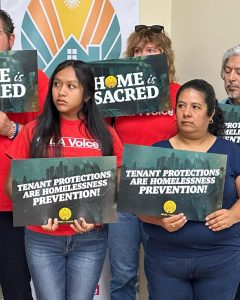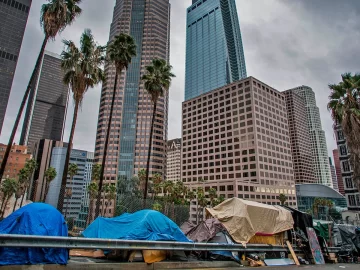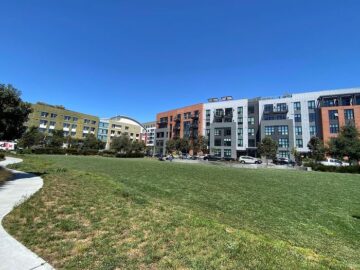
It's not a secret. California, and especially Los Angeles and San Francisco, have a very big housing problem. Homelessness continues to rise dramatically, increasing by 9% in Los Angeles County and 10% in the city of Los Angeles last year, a stark illustration of the challenges faced by officials trying to reduce the number of people living on the streets.
The Los Angeles Homeless Services Authority recently released its annual tally revealing an unprecedented crisis. The count, conducted by thousands of volunteers during three days in January, projected that 75,518 people were living in interim housing or a tent, car, van, RV, tent or makeshift shelter in Los Angeles County, compared with 69,144 the previous year.
Since the 2015 count, homelessness has increased by 70% in the county and 80% in the city.
"We are experiencing a homelessness crisis in California," Durazo told OSV News in an e-mail. "We've had a 10% rise of people becoming homeless between 2022 and 2023, and 31% since 2010. In addition, COVID-era tenant protections have just ended and thousands of eviction notices were filed by landlords in my district," she added. "We urge people in the L.A. area to seek help through services available by the city and tenants' rights organizations before packing up and leaving their homes. My Senate Bill 567, a Homelessness Prevention Bill, will close loopholes that allow illegal evictions, and provides a mechanism for enforcement."
Durazo's district includes the Boyle Heights neighborhood where Jesuit Father Brendan Busse pastors Dolores Mission, a parish which -- since 1925 -- has served the poor and immigrant community of "the Flats" east of downtown Los Angeles.
"I think the evictions crisis has really been the crisis of people right on the edge of becoming homeless for a long time," said Father Busse. "And if income and wage gaps aren't addressed, then you have this constant population that's been living right on the edge, and it doesn't take much to make them homeless -- especially when eviction protections are being removed."
Eviction protections ended Aug. 1 in Los Angeles. The day before, Los Angeles Mayor Karen Bass advised citizens, "Our message today to Angelenos is clear: Do not self-evict. If you receive a notice, file a response -- and most importantly, reach out to the city for support. "
"There's a gap between public housing, or subsidized housing, and affordable housing," Father Busse noted, adding it's ever-increasing for his folks. "A lot of the conversation is about creating more affordable housing. But if we're honest, what people mean by affordable isn't always the same. So if you're calculating 'affordable' by mean income in Los Angeles," he explained, "that's not going to get anywhere close to the deeply low income folks who live in a parish like Dolores Mission."
The U.S. The Department of Housing and Urban Development considers $66,750 per year "low income" for a one-person household in LA County. A March 2023 study by financial website Smart Asset -- using MIT's Living Wage Calculator -- estimates a childless Los Angeles resident needs $76,710 after-tax income for housing, food, transportation, medical care and more.
The Public Policy Institute of California notes occupations with the highest rates of poverty -- cleaning, farming, food prep and personal care -- have a median hourly wage of $20.14 statewide, or $41,891 annually.
Earle Vaughan, president of the California Rental Housing Association (CalRHA), is shown "deeply concerned about legislation like Senate Bill 567", introduced by Sen. María Elena Durazo, D-Los Angeles, that, if passed, would impose unnecessary and unreasonable restrictions on property owners.
"Keep in mind, our association of 25,000 members are for the most part individuals and families operating like small business owners who rely on rental properties as an income source, not the owners of large apartment complexes," he said.

 Parriva
Parriva

